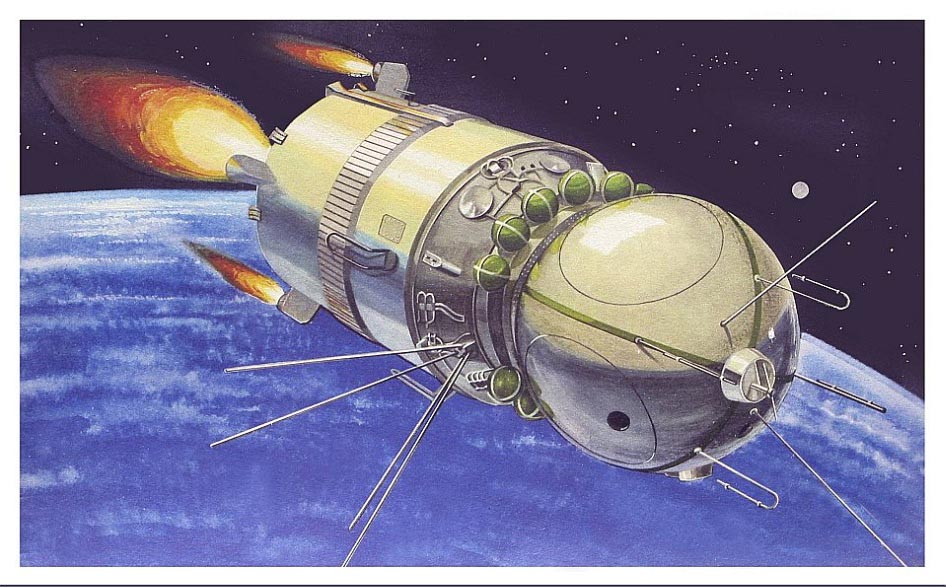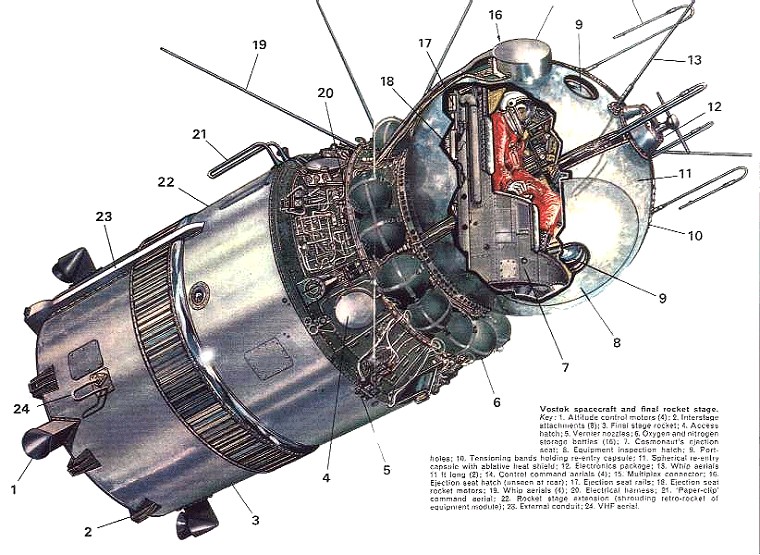Vostok Spacecraft (1961)
About the Design
The world's first manned spacecraft, the one-man Vostok epitomized Soviet engineering during the 1950-1960 period. It was functional, inelegant, clunky, and just plain butt-ugly, but it got the job done.
Like America's two-man Gemini spacecraft that followed several years later, the Vostok was composed of three main sections: a command capsule, a retro-pack, and the engine/service module. Because the Soviets had no warm water navy that could recover an ocean-landing vehicle, they had no choice but to design their craft to make "hard" landings within Soviet territory. This required the returning cosmonaut to eject from his capsule and then parachute to the ground while his spacecraft -- also decelerated by parachute -- slammed into terra firma. The fact that cosmonauts did not touch down within their spacecraft was concealed from the general public for many years because it made the USSR ineligible for a number of air/space records according to the strict rules of the Fédération Aéronautique Internationale (FAI). |
About the Kit
Manufactured by East Germany's VEB Plasticart, this Vostok model was -- like the ship it depicted -- inelegant and clunky, lacking the craft and fit of the earlier Revell kit from which it appeared to be reverse-engineered. (Even the box art was a direct steal of Revell's original product.) Still, it has the distinction of being a Soviet-era manned satellite kit manufactured by a Soviet-era Communist satellite country.
|



